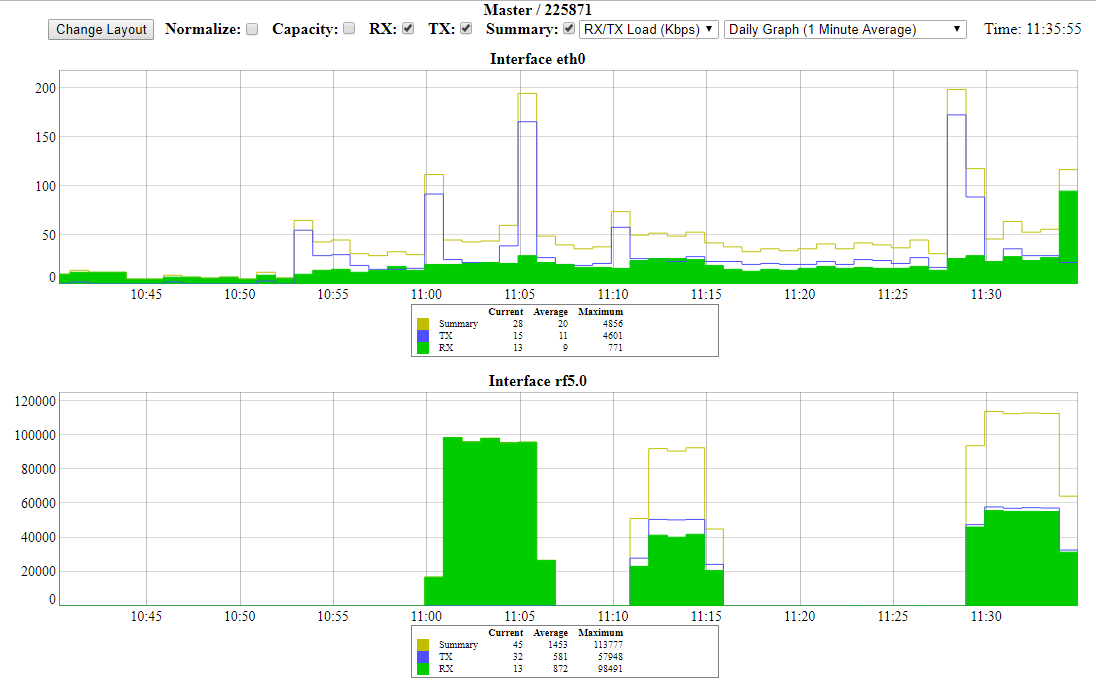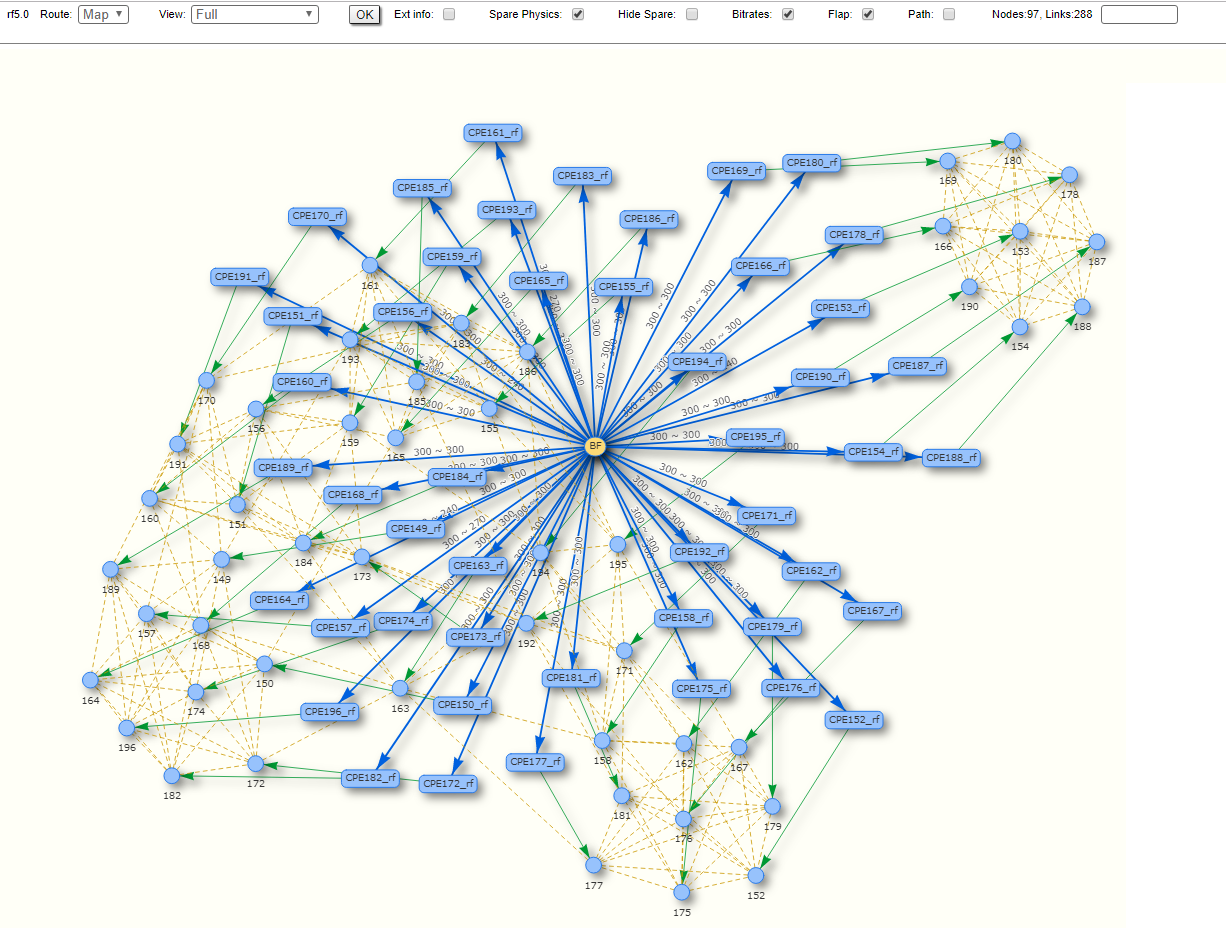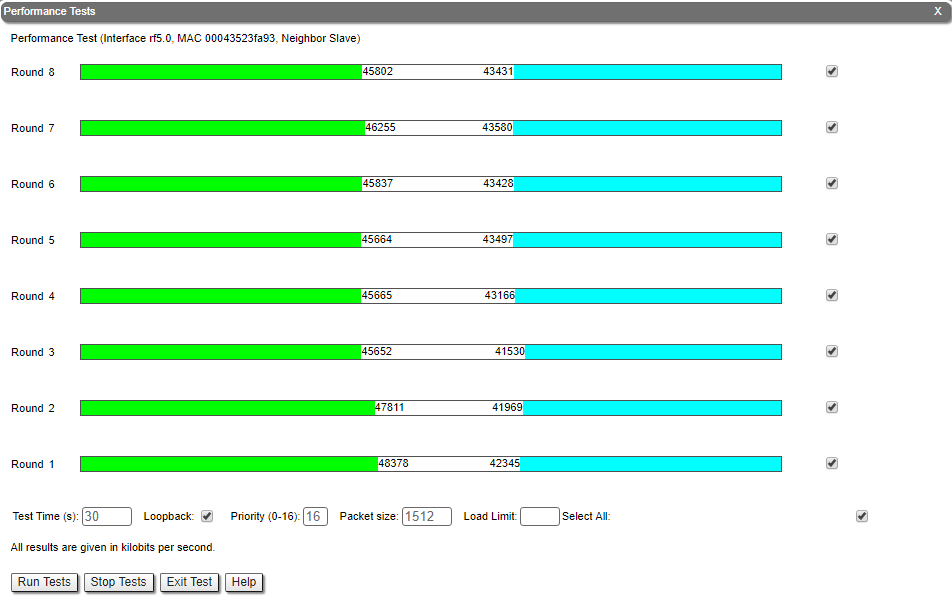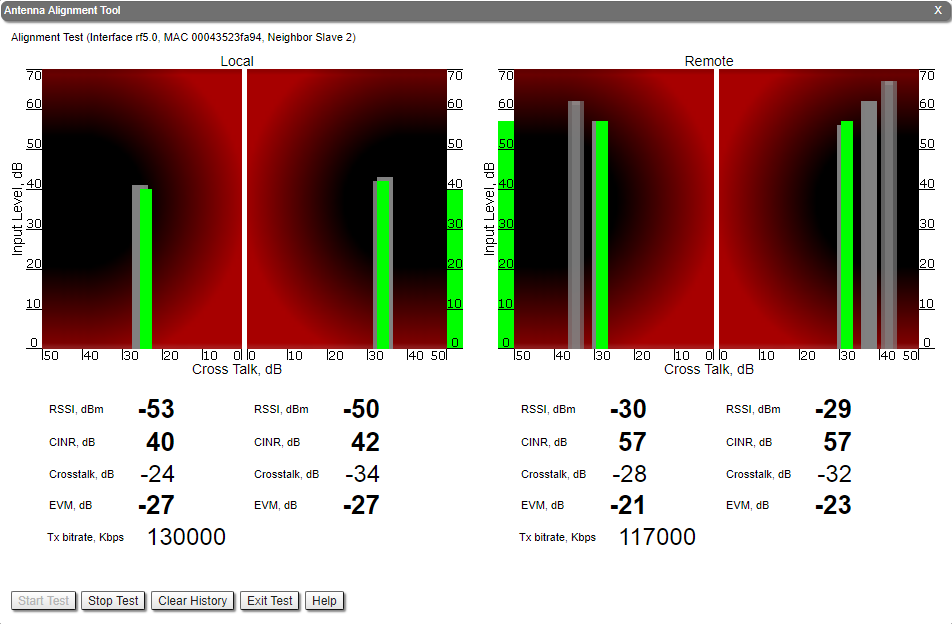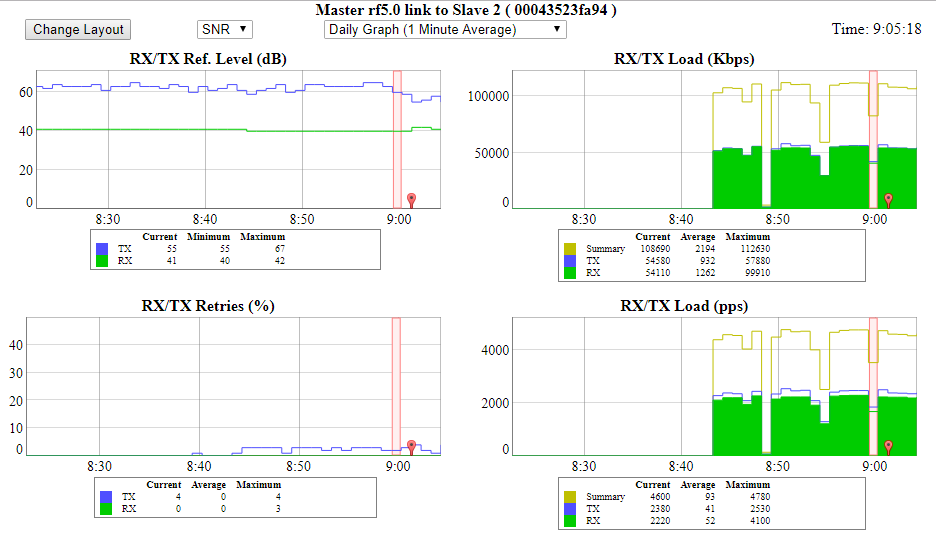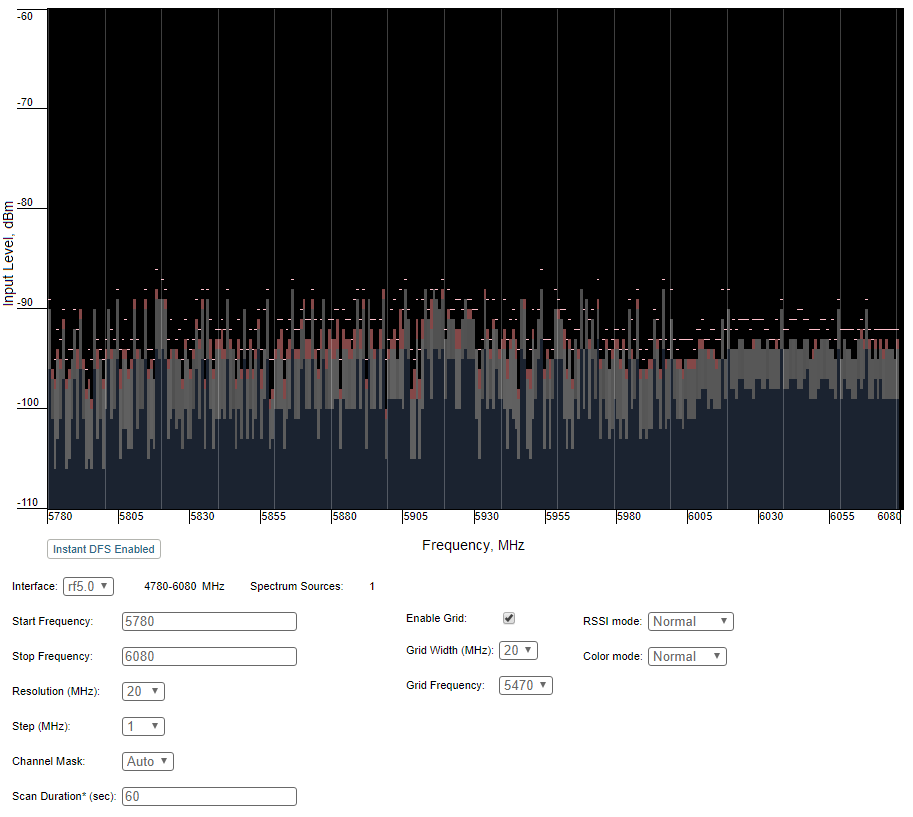...
InfiLINK 2x2 and InfiMAN 2x2 product families have a wide range of monitoring capabilities. This section describes web interface with all utilities it offers as well as CLI command review for maintenance and monitoring of device and network status.
Web interface
This article is only intended to show briefly main paremeters for device monitoring and troubleshooting, for more information about Web interface please proceed to InfiNet Wireless R5000 - Web GUI - Technical User Manual.
Device status section
There is a hardware monitoring information at the top of the section. Displays the CPU, memory and flash usage of the unit in real time.
| Center |
|---|
Interface statistics
Displays the status, MAC address and operational mode for each interface, along with the traffic load for Rx/Tx, the number of packets transferred on Rx/Tx and the Rx/Tx errors.
...
The same information that is displayed in real time in the statistics tables can be monitored continuously using graphs in order to visualize the evolution in real time, daily or monthly. The Rx/Tx Load and CPU load can be monitored for each interface and the reference level, retries, Rx/Tx load and bitrate graphs are available for the radio link monitor.
| Center |
|---|
Links Statistics on rf5.0
The top of this section displays the following information for the radio interface of the unit:
...
Displays the MINT topology schematic map with the visualization of the active and alternative routes to each node. Allows to visually determine the network connectivity and complexity and to track the route switching, including mobile objects, shows also bitrate value, ethernet interface state and wired connections.
| Center |
|---|
Performance test
Traffic is generated one way or bidirectional in order to test the link throughput. In software with Polling technology support traffic is generated with different bitrates, it will show the maximum throughput obtained for each bitrate and the number of retries (the number of retries reflects the quality of the link – an increased number of retries or retransmissions indicates a bad quality). In software with TDMA technology support traffic is generated with maxium possible bitrate. In case of testing the link previously identified of being in poor radio conditions, it shows that higher bitrates have a lot of retries (the red line in Figure 5) and low throughput.
| Center |
|---|
Antenna Alignment
An intuitive graphical tool that helps to check the antenna alignment and to troubleshoot problems related to the link quality (errors, retries, poor signal level). It provides information about the RSSI level, the signal level, retries in percentage, Error Vector Magnitude (EVM) and bitrate. Some basic guidelines:
- For correct alignment the green graphical indication for the signal level should be seen as close as possible to the center of the black area.
- In text part, the optimal level for the RSSI is between -60 to -40 dBm, the CINR (carrier-to-interference-and-noise ratio), should be equal to or greater than 28 dB. The Crosstalk indicates the influence of the vertical and horizontal polarizations on each other, and it should not exceed -20 dB. Error Vector Magnitude shows how far are the real constellation points from the ideal ones in the modulation scheme. The optimal value is below -21 dB. If the CINR level is more than 50 dB the Tx power should be reduced. Sometimes levels below 12 dB can be enough to have an operational link, but for this to happen the EVM should be more than 21 and the retries should be very small.
| Center |
|---|
Statistics graphs
Allows to monitor the device parameters represented in the graphical charts. It helps to to find out exact time when did the problem occur, critical events like link outages or frequency swaps are marked by small red markers on the bottom of each graph.
| Center |
|---|
Spectrum analyzer
Performs a scan of the electromagnetic spectrum in the desired frequency range and provides detailed information about the emitting sources present in the area. While the test is being performed the link is disconnected and the unit will function in listening mode only. Interferences can be easily spotted this way.
Interference pulses are displayed for the frequencies that are polluted. By pointing over the desired pulse, detailed information will be displayed about the strength of the interference: input level, max, average and high RSSI. As it can be seen in the picture below, it is easy to spot the affected areas in the spectrum. The scan is available based on customized parameters: start/stop frequency, band, step, channel mask and scan duration.
| Center |
|---|
Maintenance
The following management options are available from the Web interface, Maintenance section:
...
In addition, commands can be sent over the radio link to the remote unit. This is a useful feature when for example the IP address of the remote unit is not reachable (it can be set to a different network class or not set at all) and its management becomes unavailable. In this case, the configuration of the remote unit can be checked using the remote commands. Information like routing table, ARP table, switch statistics etc can be queried and commands can be sent over the radio link in order to modify the existing configuration.
Command Line Interface
The CLI represents a Unix-like command line interface used for the management and configuration of the device. CLI is available from the Web interface in the Command Line page or via Telnet or SSH connection. SSH is preferred because of the security features. Telnet is enabled by default, although the built-in SSH server requires activation using the command "sshd start".
MINT map
The "mint map" utility that displays information about all MINT neighbors for an easy tracking and troubleshooting, allows to estimate signal level and current bitrate. The "mint map detail" command shows also additional information about each link, including the connection cost.
| Center | |||||||
|---|---|---|---|---|---|---|---|
|
Ltest
A utility for radio link testing, providing real-time monitoring of the current and maximum signal levels, retries, errors and throughput testing.
...
| Center | |||||||
|---|---|---|---|---|---|---|---|
|
Muffer
Muffer module allows to perform rapid testing of the electromagnetic environment showing the radio links utilization efficiency, the sources of interference and their power. The following muffer modes are available:
...

